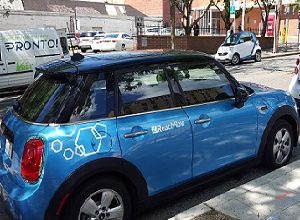COVID-19 has reshaped the shared mobility Industry

Mobility connects the world. Period.
In the early 2000s, the world saw a transformational face of the automotive industry in the form of Shared Mobility. It changed the whole landscape of the transportation industry for good.

Director, Uffizio India Software Pvt Ltd
Shared mobility simply means the shared use of transportation modes that commonly include, Carpool, Bikepool, Peer to peer rideshare, On-demand ride services and so on. Ola, Uber, Vogo, Bounce, Rapido, and Yulu are some of the major shared mobility players.
The skyrocketing popularity of Shared Mobility
The convenience, sustainability and affordability became the prime reasons for the worldwide acceptance and exponential growth of this sector.
The industry trend shows that shared mobility has become the first choice over public transit for urban dwellers. Not only has it decreased overcrowding of roads but have given a better sustainable and eco-friendly transport option. As per What next? 2017 issues, by 2030, only 32% of cars will be owned by private owners and the rest will be sold for mobility services.
With technology advancements, the shared mobility sector has gained better efficiency in sharing assets easily. Telematics plays a major role in streamlining its services and adding innovation and better functionalities for greater user experiences. From dockless mobility to offering last mile and first mile solutions, real-time user connectivity to driver behaviour analysis and theft prevention, with telematics the shared mobility has transformed into smart mobility.
“As per the market analysis, it is predicted that the shared mobility sector will see an annual growth of 28% from the year 2015 to 2030.”
But then the pandemic happened! Like any other industry, COVID-19 crisis disrupted shared mobility enormously.
Effect of Pandemic on shared mobility in a snapshot
70 to 90 per cent dip in Public-transit ridership across the world.
- Ride hailers are experiencing declines of up to 60 to 70 per cent.
- a scooter-sharing start-up laid off over 30 to 40 per cent of its workforce.
- Preference for taxis and car-hailing services went down by 15% post the COVID-19 crisis.
- With decreased public movement, mandatory social distancing, and the whole world going virtual, shared mobility has lost its demand and is expected to stay at this state for a while now.
- People and businesses have adapted themselves to this new normal, of course, there isn’t any other way. The same applies to shared mobility players. Those who adapt, innovate, strategize and implement would win.
The quick action plan adopted by major shared mobility players
Recovery of the normalcy is not an easy path. But it is important to start with a better plan that ensures economic growth without the widespread of the pandemic. Major shared mobility players across the world have started their operations while following the strict WHO guidelines. Some of the implemented features include:
- Temperature screening stations to check the signs of fever in passengers boarding.
- Wearing masks
- Regular disinfection of the vehicle
- Switching of ACs
- Using protective shields
- Maintaining physical distance with the drier by sitting at the rear seats
- Contactless payment
These measures have become mandatory to minimise the risk of infection. The key here is to enhance the passengers’ confidence by ensuring their safety.
Future of Shared Mobility in the Pandemic era
Well, the future is unpredictable. But there ought to be an action plan.
Mobility players across the globe are focussing more of the safety standards to protect their customers and employees. Here are some real-life examples:
Ride-hailing companies like Uber and Lyft have removed the carpool option from their apps and made it mandatory for the drivers to sanitize the surfaces for 15 minutes before a new passenger enters.
A scooter-sharing company has mounted electric displays on the scooter that would show the last disinfection done.
Uber India has expanded its realm by starting dedicated rentals for corporates and e-commerce deliveries.
Ola emergency service, launched by Ola for those who need to be rushed to the hospital in case of a medical emergency.
Scooter sharing platforms Vogo, Bounce and Yulu have moved to increase their long-term two-wheeler subscriptions.
Bike taxi app Rapido has started transporting packages.
With this, it becomes clear that COVID-19 demands for changed business behaviour. It demands businesses to be flexible and up-to-date. Shared mobility players will have to diversify their business to survive.
The challenges are real, the impact is drastic. Getting back to normalcy may take time, so it becomes crucial to adapt to this “new normal”.
Published in Telematics Wire



